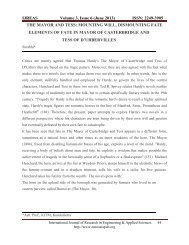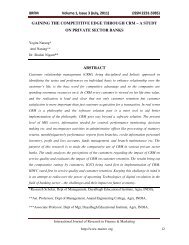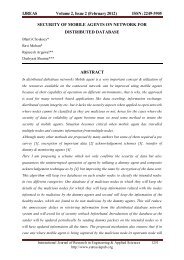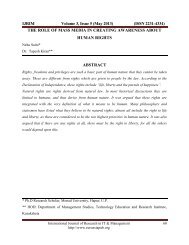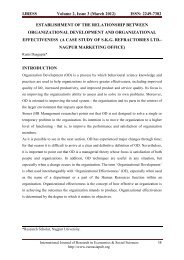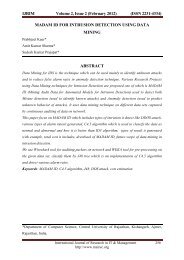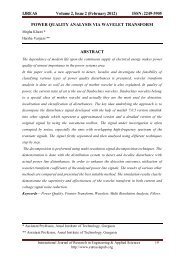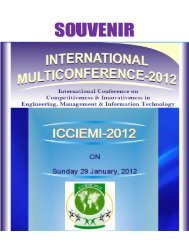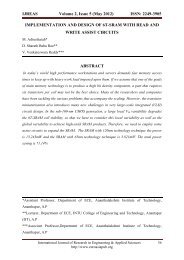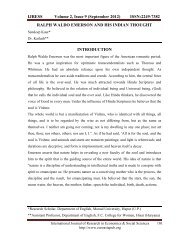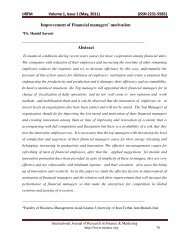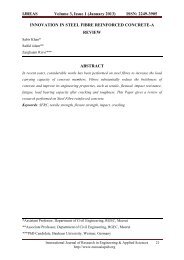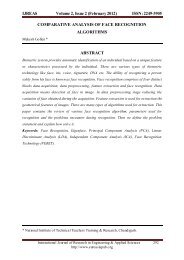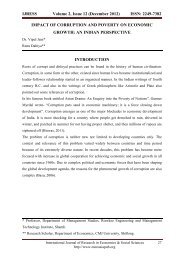A RELATIONSHIP BETWEEN ORGANISATIONAL ... - Euroasiapub.org
A RELATIONSHIP BETWEEN ORGANISATIONAL ... - Euroasiapub.org
A RELATIONSHIP BETWEEN ORGANISATIONAL ... - Euroasiapub.org
Create successful ePaper yourself
Turn your PDF publications into a flip-book with our unique Google optimized e-Paper software.
IJRFM Volume 1, Issue 2 (June, 2011) (ISSN 2231-5985)<br />
in interpretation of given environment, choice of strategic direction, technology options but<br />
also in providing direction and determining intensity of responses of employees to meeting<br />
the challenges of the internal environment and contextual constituents. Findings suggest that<br />
when change is seen as a positive characteristic of the environment, employees are more<br />
likely to commit to the work of the institution.<br />
REFERENCES<br />
[1]Allen, R. (1985): Four Phases for Bringing About Cultural Change; Oxford<br />
[2]Bate, S. (1994): Strategies for Cultural Change; Butterworth Heinemann, Oxford<br />
[3]Benedict, R. (1934): Patterns of Culture; Houghton Mifflin, Boston<br />
[4]Brown, A. (1995): Organisational Culture; Pitman Publishing, London<br />
[5]Budd, John W. and Bhave, Devasheesh (2008) "Values, Ideologies, and Frames of<br />
Reference in Industrial Relations," inSage Handbook of Industrial Relations, Sage.<br />
[6]Befort, Stephen F. and Budd, John W. (2009) Invisible Hands, Invisible Objectives:<br />
Bringing Workplace Law and Public Policy Into Focus, Stanford University Press.<br />
[7]Budd, John W. and Bhave, Devasheesh (2010) "The Employment Relationship," in Sage<br />
Handbook of Handbook of Human Resource Management, Sage<br />
[8]De Silva, S. (1995): Harmonizing Industrial Relations and Human Resource<br />
Management; International Labour Organisations Journal, 12, 3, 45<br />
[9]Dessler, G (2001): Management, leading people and <strong>org</strong>anisations in the 21st century;<br />
Prentice Hall Inc, New Jersey.<br />
[10]Fox, Alan (1974) Beyond Contract: Work, Power and Trust Relations, Farber and Farber.<br />
[11]Kilmann, M. et al (1986): Gaining Control of the Corporate Culture; McGraw Hill<br />
[12]Kaufman, Bruce E. (2004) Theoretical Perspectives on Work and the Employment<br />
[13]Leat, M (2001): Exploring employee relations; Heinemann, Butterworth, Oxford<br />
Relationship, Industrial Relations Research Association.<br />
[14]Niland, J., Russell, L. and Verevis, C. (1994): The Future of Industrial Relations; Sage<br />
Publications, p 466<br />
[15]Purcell, J. (1987): Mapping management styles in employee relations; Journal of<br />
Management Studies, 24, 5, 535–48<br />
[16]Vroom, V. (1964). Work and motivation.<br />
International Journal of Research in Finance & Marketing 63<br />
http://www.mairec <strong>org</strong>



